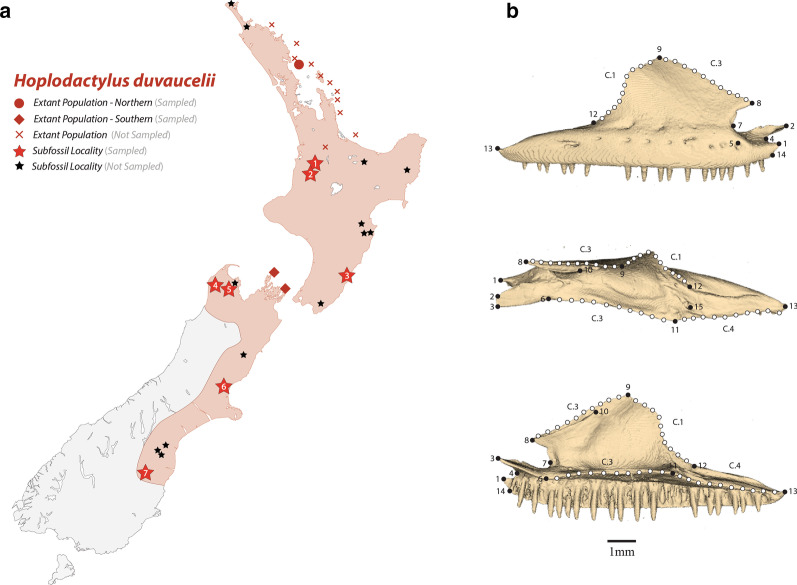Fig. 1.
a Assumed Holocene distribution (red fill) of Hoplodactylus duvaucelii, showing extant modern northern/southern populations (circles, crosses and triangles) and subfossil collection localities (stars). Numbers denote sampled Holocene subfossil collection localities (1–7), with letters corresponding to subfossil specimens (A-J): Little Lost World, Waitomo (1—A); Companionway Cave, Waitomo (2—K); Mataikona River, Wairarapa (3—I); Gouland Downs, Tasman (4—G); Takaka Hill, Tasman (5—H); Ardenest, North Canterbury (6 – B/C/D/E/F); Earthquakes, North Otago (7—J). b Surface models of a diplodactylid maxilla in lateral (top), dorsal (middle) and medial (bottom) views demonstrating placement of fixed landmarks (black circles) and equally spaced semilandmarks (white circles). Numbers and C-prefixed numbers correspond to anatomical landmark descriptions (Additional file 1: Table S2.3)

